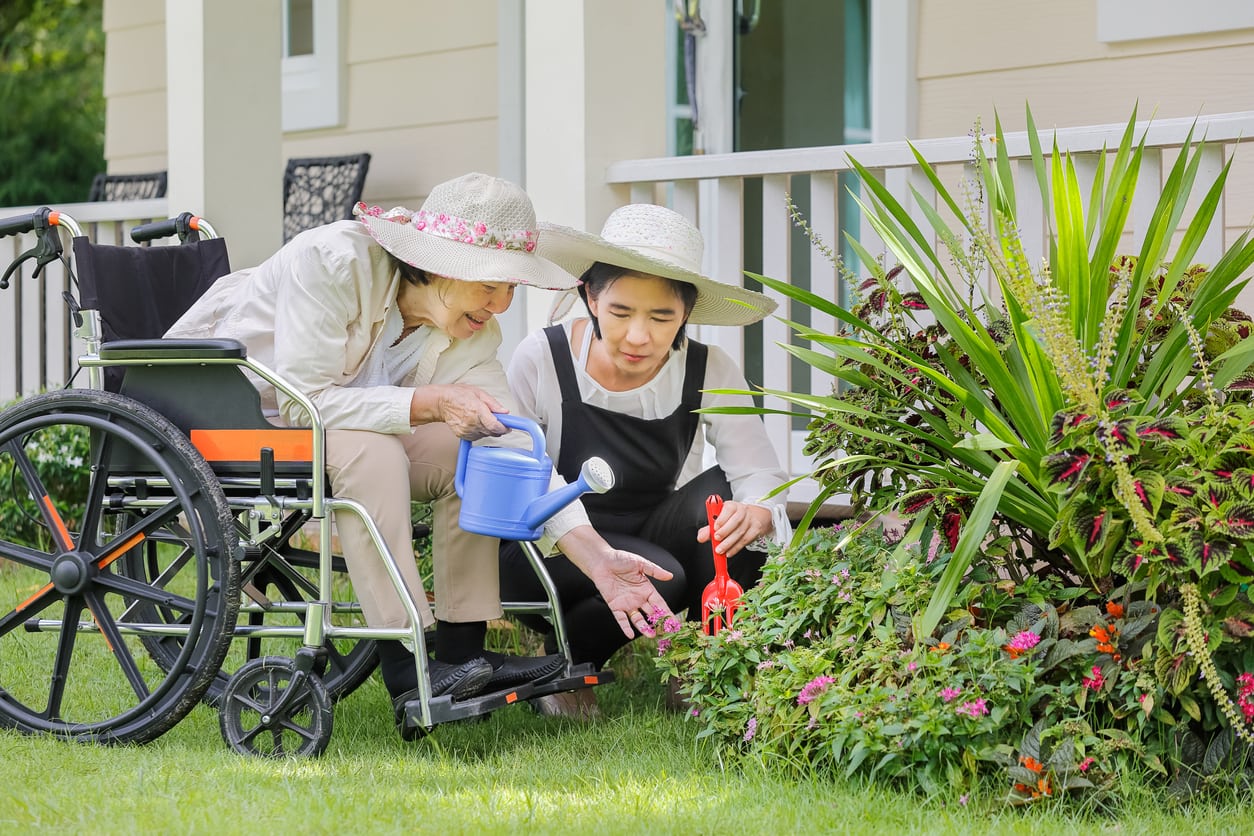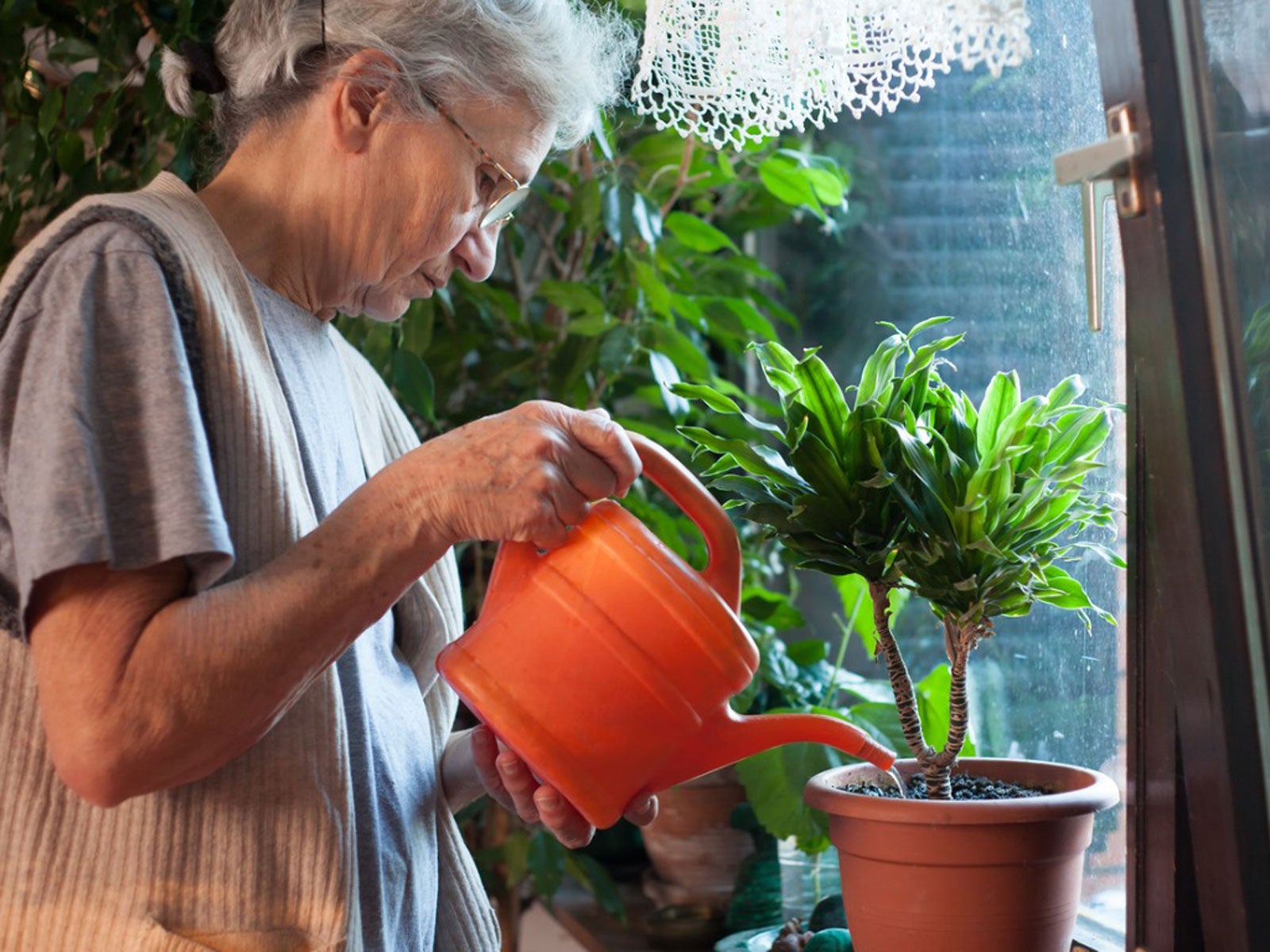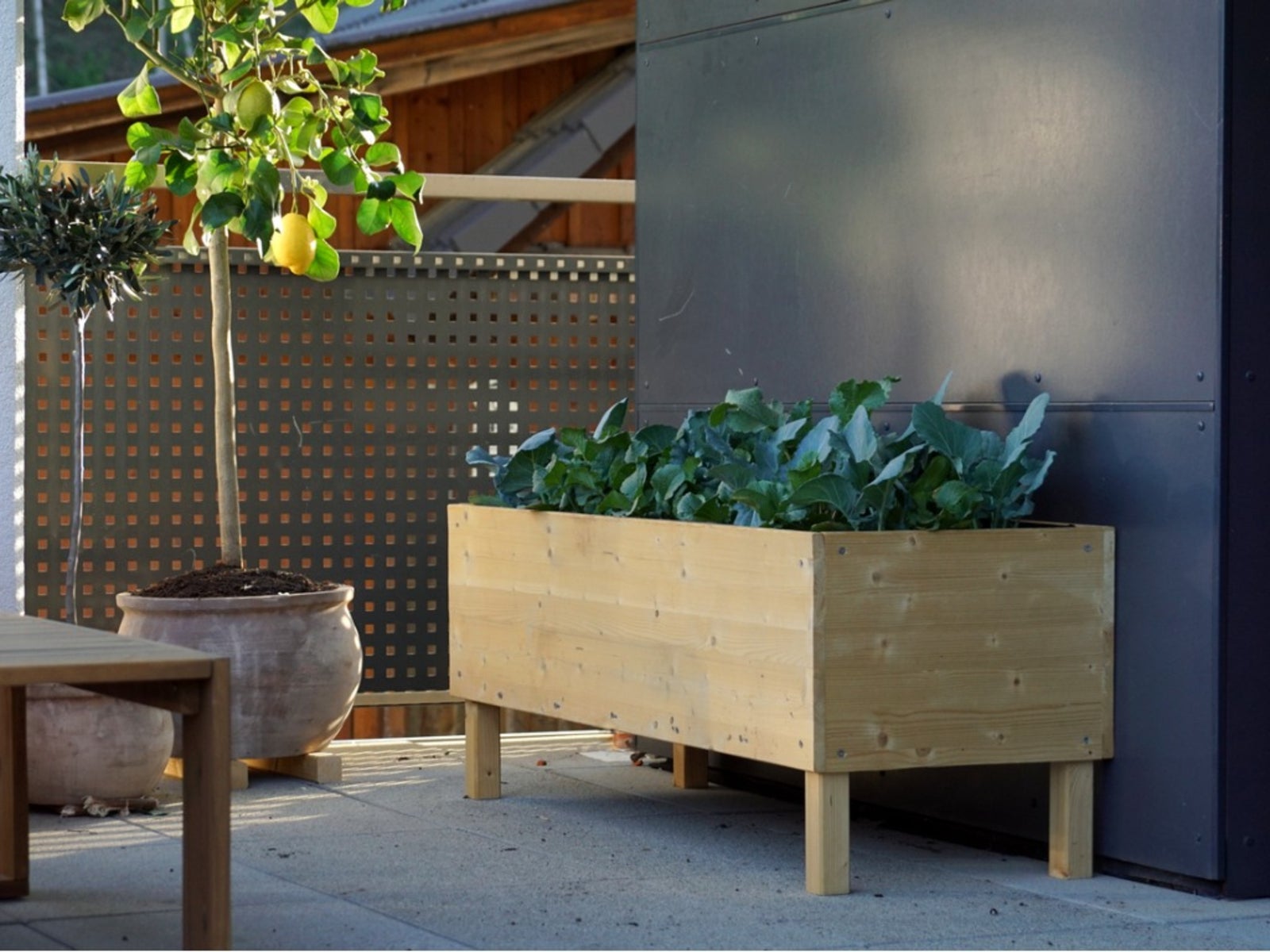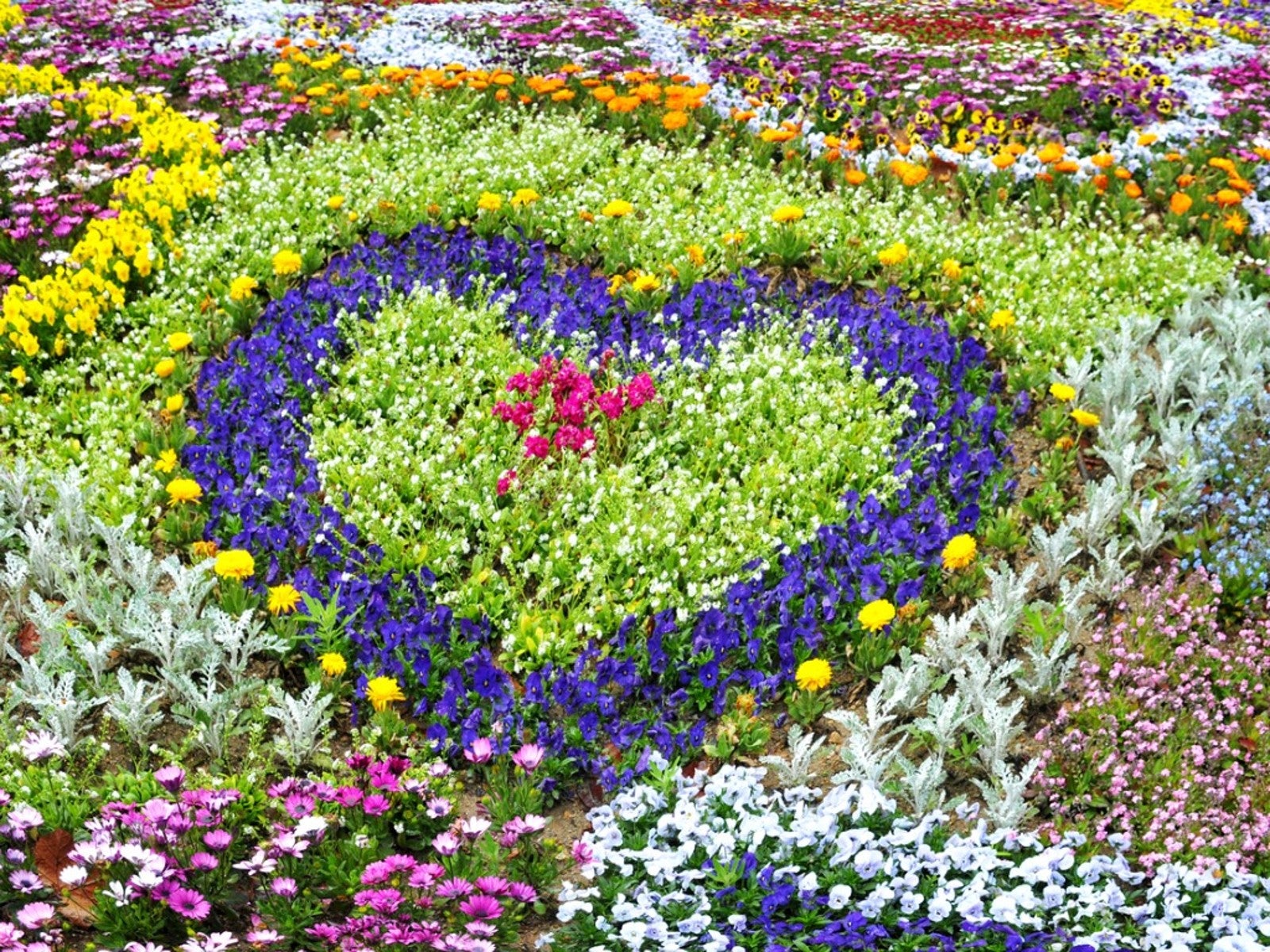Hospice Garden Ideas – Learn About Gardens And Hospice Care

It’s no secret to those of us who garden that it is an almost sacred, therapeutic task. A garden can be invigorating with its constant movement and aroma, but it can also be a source of solace, a place for prayer and meditation, or even a conversation starter. Because of these factors, gardens for those in hospice care are often incorporated into the facility. What is a hospice garden? Read on to find out about the relationship between gardens and hospice and how to design a hospice garden.
About Gardens and Hospice
Hospice is end-of-life care designed to ease the passing of patients that have six months or less to live. Hospice is not only about palliative care but is also a philosophy of care that not only eases patient’s pain and symptoms but attends to their emotional and spiritual needs as well as those of their loved ones. The whole idea is to maximize the patient’s quality of life while at the same time tending to and preparing the patient for their impending death.
What is a Hospice Garden?
The philosophy behind hospice care lends itself well to the blending of gardens for hospice facilities. There’s not any particular hospice garden idea or design but, generally speaking, a hospice garden will be simple, focusing on nature rather than elaborate designs. Patients often want to get outside one more time or, if they are confined to a bed, be able to see into a sea of greens, textures, and colors to observe the birds, bees, and squirrels frolicking. They want to feel that they can still interact with the outside world. Relatives may wish to take a walk and, yet, still be near enough to feel connected to their loved one, so simple garden paths are often integral. Benches or secluded nooks make for quiet areas of contemplation or prayer. Staff also benefit from a place to contemplate and rejuvenate.
How to Design a Hospice Garden
A hospice garden may be the work of a landscape designer, the loving work of volunteers, or even loved ones at the facility. It can be profoundly personal for family members and patients, when they are able, to add elements to the design of the hospice garden. This may mean a loving tribute to a family member who has passed or words of comfort etched into a stone step. It may mean seashells gathered during happier times become part of the landscape or a favorite lily is planted. The basics of a landscape garden should rely on the plant life but incorporating hospice garden ideas such as bird feeders and baths, rock features, and fountains that can be viewed from windows should be included as well. Anything that will allow even the sickest patients to interact with nature will work well in a hospice garden. Moving water is especially soothing whether it is a babbling brook, water fountain, or a small bubbler. Provide both shaded and sun-filled areas. Patients are often chilled and sitting in the sun can brighten both body and soul. Special care should be paid to accommodate patients in a hospice setting. All stones and fountains should have rounded edges, and paths should be wide enough to accommodate wheelchairs. Slopes should be gentle as well. As to the garden flora, fragrant plants should be incorporated but steer away from those that are thorny or prickly. Include familiar flowers such as lilacs, roses, and lilies that will titillate the senses and invite butterflies into the garden. The end goal of a hospice garden is to make it homey while offering comfort and making the garden available to everyone. Hospice care is often the next best thing to passing in one’s own home and, as such, the goal is to make it as relaxing and comforting as possible.
Gardening tips, videos, info and more delivered right to your inbox!
Sign up for the Gardening Know How newsletter today and receive a free copy of our e-book "How to Grow Delicious Tomatoes".

Amy Grant has been gardening for 30 years and writing for 15. A professional chef and caterer, Amy's area of expertise is culinary gardening.
-
 Get Ready For A Summer Of Hummers! Grow These Full Sun Hummingbird Plants and Flowers
Get Ready For A Summer Of Hummers! Grow These Full Sun Hummingbird Plants and FlowersIf you’re lucky enough to enjoy a sunny backyard, make sure you are maxing out on your pollinator opportunities and grow these full sun hummingbird plants and flowers
By Tonya Barnett
-
 12 Lush Alternatives To A Lawn For Sustainable Spaces
12 Lush Alternatives To A Lawn For Sustainable SpacesAlternatives to a lawn are beautiful and also beneficial to your local ecosystem and its pollinators. Explore our top picks for plants to replace grass.
By Tonya Barnett
-
 Seniors And Houseplants: Indoor Senior Gardening Ideas
Seniors And Houseplants: Indoor Senior Gardening IdeasIndoor gardening for seniors can help with depression, stress, and loneliness, especially while social distancing. Here are ideas.
By Mary H. Dyer
-
 Psychiatric Health Garden – Designing Gardens For Mental Health Patients
Psychiatric Health Garden – Designing Gardens For Mental Health PatientsClose your eyes and imagine yourself sitting in your dream garden. Does this visualization make you feel calm and relaxed? This is the concept behind planting gardens for mental health. Learn more about garden therapy and psychiatric health gardens in this article.
By Darcy Larum
-
 Healing Garden Ideas – How To Make A Healing Garden
Healing Garden Ideas – How To Make A Healing GardenEven gardens filled with nothing but ornamental plants can have some medicinal and healing value – a collection of plants meant to soothe and heal the mind and body are known as healing gardens. Click here for some healing garden ideas to help get you started.
By Darcy Larum
-
 What Is A Memory Garden: Gardens For People With Alzheimer’s And Dementia
What Is A Memory Garden: Gardens For People With Alzheimer’s And DementiaPeople with dementia or Alzheimer's disease will glean a host of positive experiences from participating in the garden. Designing a memory garden allows them to enjoy exercise and fresh air as well as stimulate the senses. Learn more in this article.
By Bonnie L. Grant
-
 Senior Home Garden Activities: Gardening Activities For The Elderly
Senior Home Garden Activities: Gardening Activities For The ElderlyMore senior home garden activities are being offered to elderly residents of retirement homes and nursing homes, and even to patients with dementia or Alzheimer's. Click here to learn more about gardening activities for the elderly.
By Teo Spengler
-
 Gardening While Pregnant: Is It Safe To Garden When Pregnant
Gardening While Pregnant: Is It Safe To Garden When PregnantGardening while pregnant is an enjoyable way to get the exercise you need to stay healthy during pregnancy, but this form of exercise isn't without risk. Learn more about gardening during pregnancy in this article.
By Jackie Carroll
-
 Table Garden Design: How To Build Table Garden Boxes
Table Garden Design: How To Build Table Garden BoxesWhen gardening becomes difficult, either through growing older or due to a disability, it may be time for a table garden design in the landscape. This article can help with that. Click here to learn more.
By Susan Patterson
-
 Horticulture Therapeutic Benefits - Using Healing Gardens For Therapy
Horticulture Therapeutic Benefits - Using Healing Gardens For TherapyWhat is horticultural therapy and how is it used? Learn more about healing gardens for therapy and the horticulture therapeutic benefits they provide in this article. Click here for additional info.
By Susan Patterson